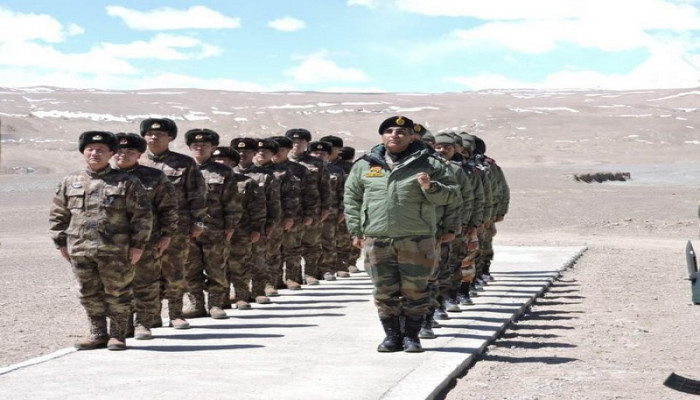Government approves establishment of intelligence posts along China Border, says top officials
- In Reports
- 06:05 PM, Oct 03, 2023
- Myind Staff
To enhance surveillance and gather vital intelligence on Beijing's activities near the Line of Actual Control (LAC), the Central government has given the green light for the establishment of Border Intelligence Posts (BIPs) along the Indo-China border. This marks the first time such measures have been sanctioned, as per sources with knowledge of the matter.
The primary role of these Border Intelligence Posts will be to closely monitor the Chinese People's Liberation Army (PLA), focusing on their military and weapons buildup, as well as their attempts to change the status quo through regular transgressions and incursions across the LAC.
These posts will be exclusively staffed by intelligence officials working in collaboration with Army and Indo-Tibetan Border Police (ITBP) units. Moreover, agencies like the National Technical Research Organisation (NTRO), Intelligence Bureau, Research and Analysis Wing (R&AW), and others will play a pivotal role in collecting and developing crucial information about any unusual PLA activities near the border. This move is aimed at bolstering India's ability to counter potential threats and safeguard its national interests.
“Each BIP, which will be created along with the Border outposts (BOPs) of ITBP, would have 4-5 intelligence officers with specific duties. They will submit reports to the government regarding any unusual activity,” said a top official, who didn’t want to be named.
The Indo-China border, spanning from Ladakh to Arunachal Pradesh, is already home to over 180 Border Outposts (BOPs) of the Indo-Tibetan Border Police (ITBP). Earlier this year, the government further authorized 47 additional border outposts and 12 staging camps for the border guarding force, commonly known as "Himveers." These additions received approval for 9,400 personnel, equivalent to seven battalions.
While the precise number of Border Intelligence Posts (BIPs) and their approved budget remain undisclosed by the government, a senior official revealed that these specialized intelligence officers would gradually be deployed at sensitive BOPs. These officers will be equipped with the latest surveillance tools to enhance monitoring and intelligence gathering along the border.
This development comes amid China's increased assertiveness along the Line of Actual Control (LAC), characterized by frequent intrusion attempts and the buildup of military infrastructure on its side of the border, including airfields and missile sites.
Since the deadly clash in the Galwan Valley in Ladakh in June 2020, India and China have been engaged in face-offs at multiple points along the LAC. Additionally, on December 9 of the same year, People's Liberation Army (PLA) troops intruded into Yangste in Arunachal Pradesh, resulting in a clash and injuries to soldiers on both sides.
Given that the Indo-China border remains undemarcated with differing perceptions of the LAC on both sides, PLA troops often transgress into disputed areas. In response to these incidents, the Indian government has not only bolstered infrastructure along the LAC but also initiated programs for the development of border villages.
A tangible example of this transformation can be observed in Mago, the first village on the border with China in the Chuna sector of West Arunachal. Prior to 2020, Mago lacked road connectivity, relying on helicopters to deliver winter supplies for the army and ITBP. However, since then, a blacktop road has been constructed up to the border, facilitating the movement of vehicles, artillery, and troops for the armed forces.
Border villages are undergoing development, receiving infrastructure such as roads, mobile connectivity, and continuous electricity through hydropower projects led by the Arunachal Pradesh government. This development is set to accelerate with the Vibrant Village Programme (VVP) initiated by Union Home Minister Amit Shah.
Arunachal Pradesh Chief Minister Pema Khandu highlighted the significant role of the army and ITBP in the development of these border villages, emphasizing infrastructure improvements, tourism promotion, and enhanced facilities for troops, including permanent structures and electricity from hydropower projects.
Officials from the army deployed in Tawang and Chuna, Arunachal Pradesh, have reported a peaceful situation in the region following last year's Yangste clash, with regular commander-level meetings held with PLA counterparts. Both the Army and ITBP are currently stockpiling supplies for the upcoming winter season when the region will be covered in snow and temperatures may drop to minus 20 degrees.
Image source: ANI







Comments